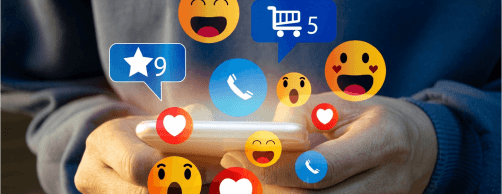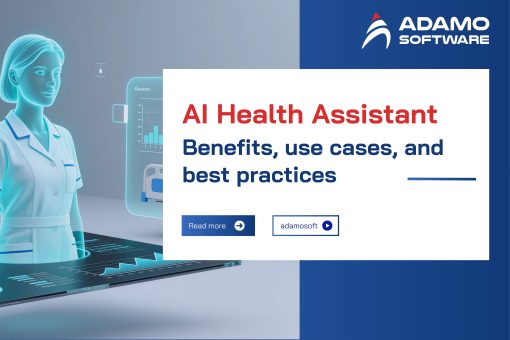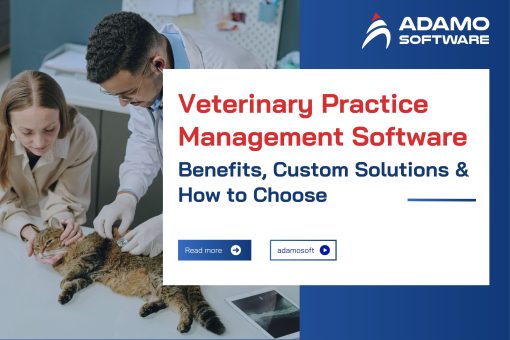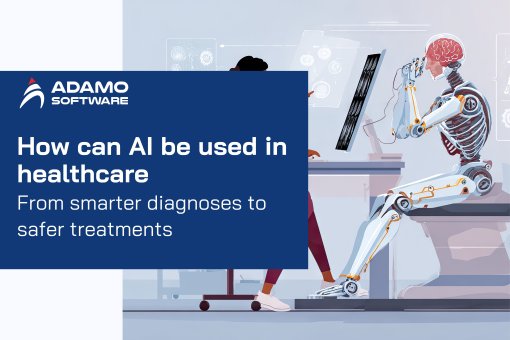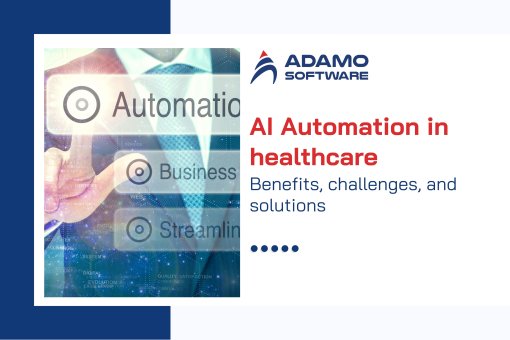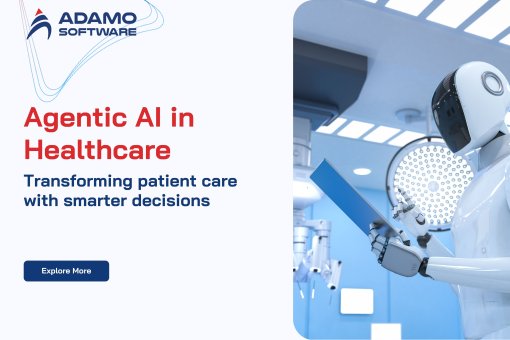Patient engagement software: Features, tech stacks and useful tips
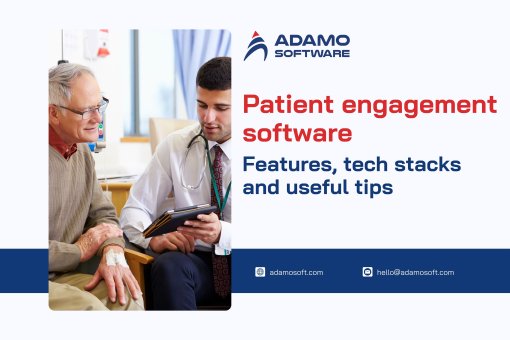
In today’s digital technology era, patient engagement software is getting popular. Let’s get more insights about the software with Adamo Software!
In today’s digital technology era, patient engagement software plays an important role in enhancing patient experience and optimizing healthcare management processes. Instead of relying entirely on the doctor’s decision, patients can now make decisions on their treatment and monitor their overall wellness. Such software can improve communication between healthcare staff and patients, providing timely information and supporting patients to proactively monitor their health. To develop patient engagement software, developers must understand the software’s important features and suitable tech stacks. Let’s get more insights into this software with Adamo Software!
Through this blog post, you will know what patient engagement software and some common types of software solutions are. Besides, we also discuss the benefits of using a patient engagement platform and some essential features of an effective patient experience software. Additionally, this blog post also provides you with some tech stacks to consider for patient engagement software and how you can choose the right software development company. All pieces of information have been thoroughly researched and updated to the latest trends. So, let’s read our blog post and find yourself some useful information!
I. What is patient engagement software?
Patient engagement software is a technology solution that allows patients to connect with the healthcare facility during and after their treatment. Thanks to this software, patients can access their personal healthcare data, schedule appointments, receive notifications from the doctors, and monitor their treatment progress more easily. Simultaneously, this software helps healthcare facilities manage patient’s data more effectively, provides online communication tools, and automates some administrative processes.
This software is often integrated with a hospital management system (HMS) or electronic health record (EHR) to synchronize data and ensure the accuracy of the information. In addition, the patient engagement software also includes features such as medication reminders, patient portals, online forms, and chatbot support. Healthcare facilities can use this software to provide disease education, remote consultations, and collect patient feedback to improve healthcare services.
II. Common types of patient engagement software solutions
There are many types of patient engagement software solutions that meet up to different needs in the healthcare industry. Each type has its distinctive features and applications in the modern healthcare system. Let’s explore some common types of software with Adamo Software!
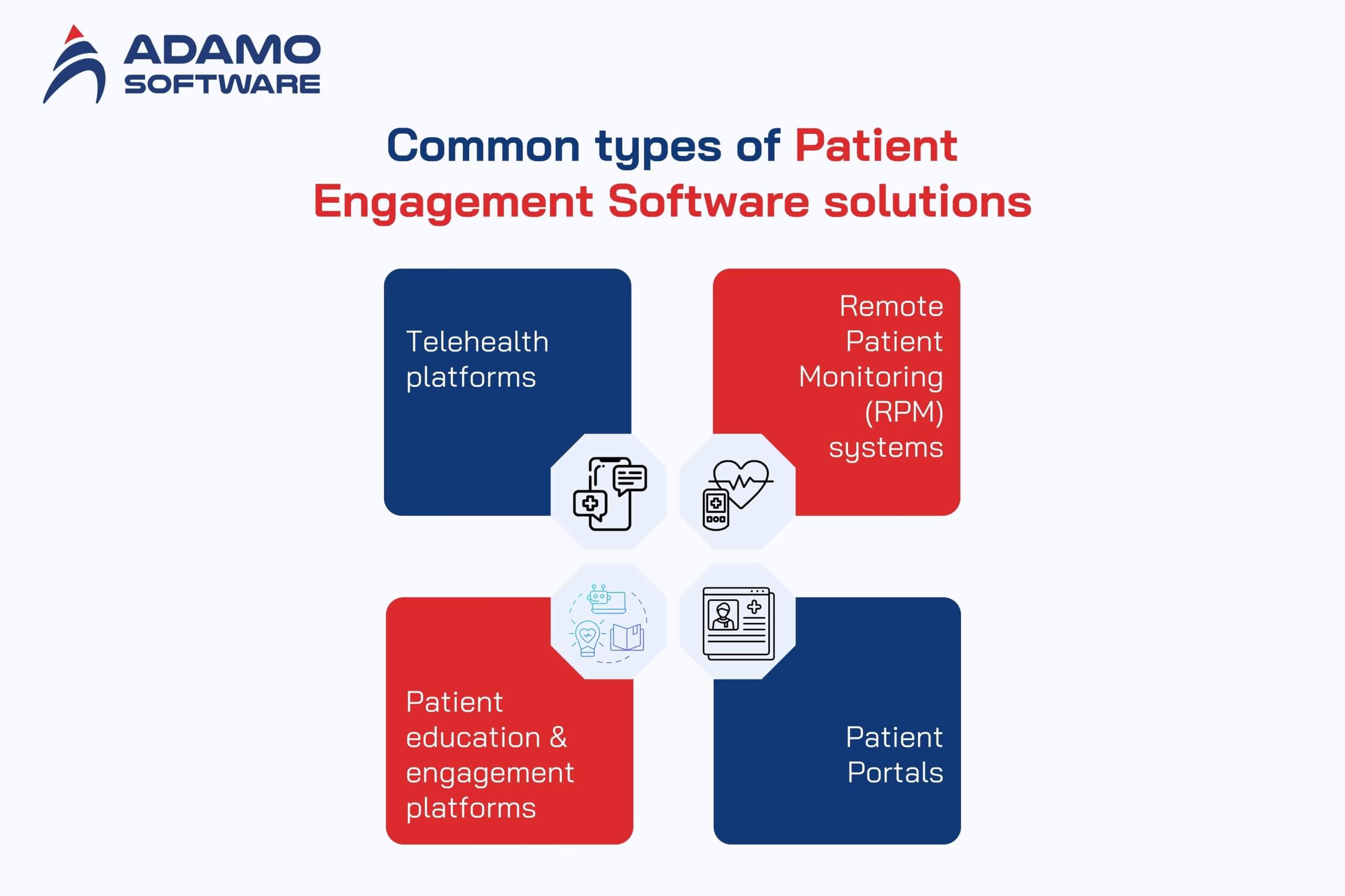
1. Telehealth platforms
Telehealth platform is one of the most popular types of patient engagement software. These platforms allow patients to connect with doctors through video calls, texts, or voice chat without going directly to the hospital. These platforms may include some features like scheduling appointments, storing medical records, and integrating electronic prescriptions.
These platforms are ideal for remote patients, those needing follow-up appointments, or those with chronic conditions. Telehealth platforms can significantly improve healthcare delivery by expanding reach, enhancing access, reducing costs, and improving patient satisfaction. They can also assist in managing chronic conditions, monitoring vital signs, and delivering health education. Some popular platforms include Doxy.me, Teladoc Health, and Amwell, which are integrated with the electronic health records.
2. Remote patient monitoring (RPM) systems
Remote patient monitoring (RPM) systems are also among the common types of patient engagement software. Through these systems, healthcare providers can monitor the patients’ health condition through medical devices such as blood pressure monitor, heart rate sensor or smartwatch. These systems will collect data in real time and send it to the center system which enables doctors to intervene promptly if they detect abnormalities.
For example, the iRhythm system uses the Zio Patch heart rate monitor to detect cardiovascular disorders in patients without requiring them to be hospitalized. iRhythm will analyze the patients’ heart data and provide their doctor with a comprehensive report. This report allows the doctor to accurately diagnose the patients’ health condition and develop a personalized treatment plan.
3. Patient education and engagement platforms
Mentioning the types of patient engagement software, patient education and engagement platforms are indispensable tools. These platforms provide educational materials, videos, and articles about health and diseases. This allows patients to better understand their conditions and treatments.
Some platforms also include symptom checkers, chatbot support, or integration with electronic health records (EHRs) to deliver personalized content to each patient. No matter if a person wants to learn about a disease or search for information about their current health condition, these platforms will help them all. Even if they are patients with chronic conditions such as diabetes or heart disease, these platforms can provide them with specialized educational programs.
Below are some outstanding patient engagement software solutions that are ideal for patients to get medical knowledge and understand their health.
- MyChart (Epic Systems)
MyChart allows patients to access medical records and provides them with information about treatment procedures, medications, and aftercare. Patients can read healthcare material from reputable medical sources and receive advice regarding their health condition.
- Healthwise
Healthwise is a healthcare education platform with thousands of articles, videos, and tools to help patients make informed healthcare decisions. This platform integrates with EHRs, allowing doctors to deliver relevant information to each patient.
4. Patient portals
A patient portal, which is also a patient engagement software type, is a digital platform, often a website or app, that grants patients access to their medical data. Custom patient portal solution includes records, treatment plans, prescriptions, test results, and medical images. Additionally, portals empower patients to schedule appointments, make online payments, and communicate directly with healthcare providers. Custom patient portals are online platforms tailored to meet the specific needs of healthcare facilities and providers.
Thanks to these solutions, medical facilities can ensure flexibility, and security, and easily integrate with existing healthcare systems like Electronic Health Records and Hospital Management Software. Besides, these solutions help them optimize healthcare processes, reduce administrative workload, and enhance the patient experience. You can deep dive into the benefits of Patient Portal Solution here.
Overall, patient engagement software solutions help healthcare facilities optimize the healthcare process and enhance patient experience. Depending on the needs of each medical facility, choosing the right system will contribute to improving service quality and treatment effectiveness.
III. Benefits of using Patient Engagement Platform
The patient engagement software brings many benefits to healthcare facilities and patients. Besides enhancing patient experience and satisfaction, this platform also optimizes the working process, improves treatment efficiency and reduces pressure for healthcare staff. Below are some main advantages of using patient engagement platforms.
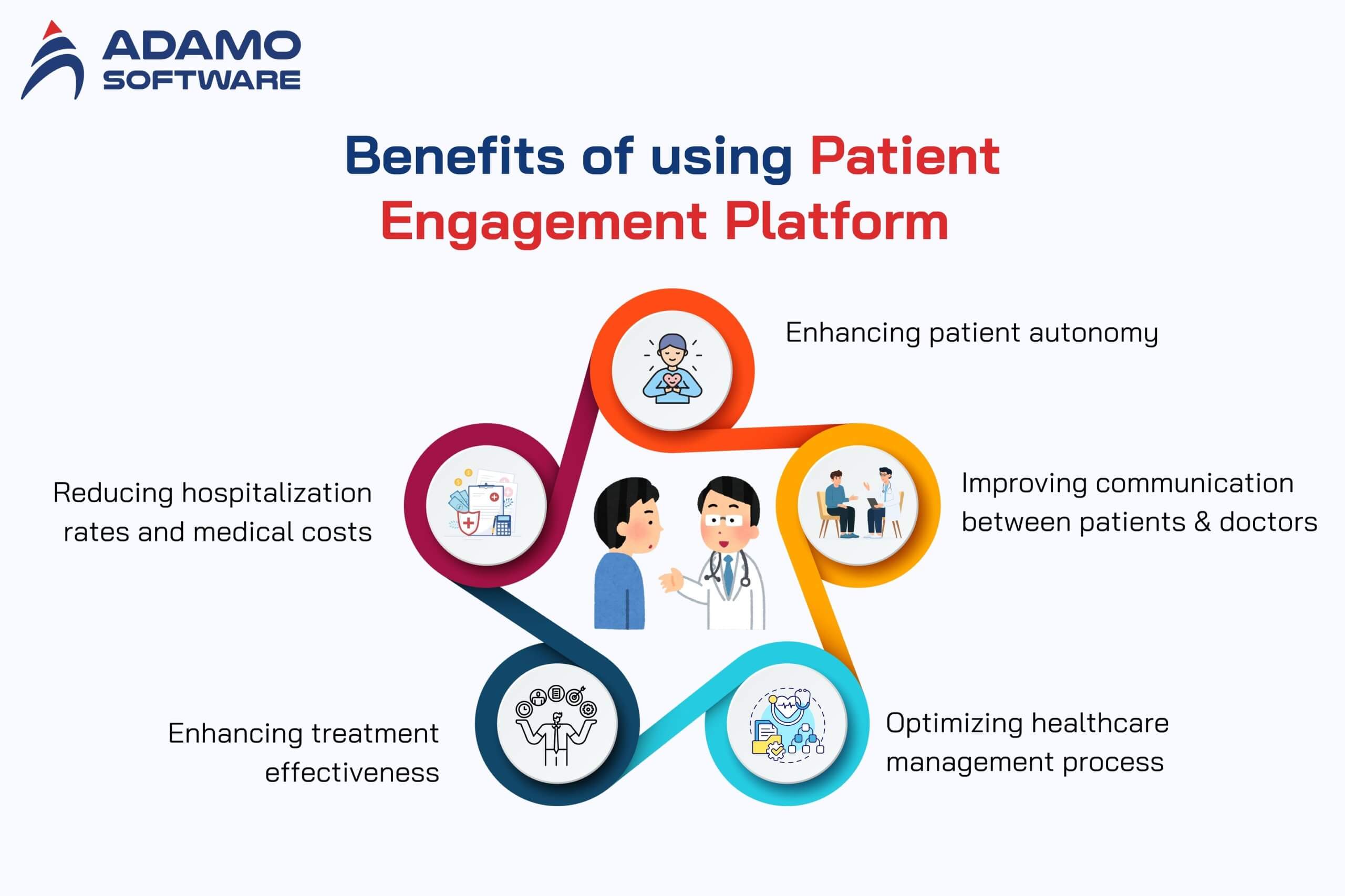
1. Enhancing patient autonomy
Thanks to the patient engagement software, patients can easily access their healthcare data, including medical records, test results, prescriptions and medical history. This allows them to monitor their health condition detailedly without depending on the doctors.
Besides, this platform also provides supportive tools like medical reminders, automated follow-up appointments, and personalized health care guidance. Thanks to this, patients can maintain their treatment routines on schedule. This reduces the risk of forgetting or missing important steps in the treatment.
In addition, patient engagement software often integrates medical education content in the form of articles, videos, or guides, helping patients better understand their condition. When the patients have grasped the information, they can be more proactive in asking questions, discussing treatment options, and making decisions.
2. Improving communication between patients and doctor
The patient engagement software helps to improve communication between patients and doctors. Instead of going directly to the healthcare facilities and waiting until their turn, patients can now easily schedule appointments and contact doctors from online messaging, video calling and chat bot support. Patients can easily talk to their doctors about health issues, ask questions, or receive remote guidance.
Besides, thanks to the automatic notification feature, patients can receive important notifications like follow-up appointments, test results or new prescriptions. This helps minimize the possibility of missing important information and ensures that patients comply with the treatment regimen.
Overall, the patient engagement software is extremely useful for patients. By improving communication, both patients and doctors can save time, improve treatment efficiency and create a more flexible and convenient healthcare environment.
3. Optimizing healthcare management process
Besides benefiting patients, the patient engagement software is also beneficial for healthcare facilities and providers. This software helps the medical centers to optimize the healthcare management process by automating many administrative processes, from scheduling appointments to storing medical records, processing prescriptions and online payments. Thanks to this, they can reduce paperwork, save time, and focus more on providing high-quality healthcare services.
Additionally, the patient engagement software integrates with the Electronic Health Records, allowing doctors to access patient information more quickly and accurately. Thanks to this integration, they can avoid unnecessary repeat tests or errors in treatment. This improves the quality of diagnosis and makes the healthcare process more efficient and consistent.
4. Enhancing treatment effectiveness
As mentioned, the reduction of paperwork allows doctors to focus more on treatment. Thus, the patient engagement software plays an important role in enhancing treatment effectiveness. This platform helps improve treatment efficiency by providing tools to support health monitoring, personalize care, and maintain a continuous connection between patients and doctors. Thanks to the ability to collect real-time data from smart medical devices, doctors can closely monitor the patient’s condition and intervene promptly when detecting abnormalities.
Besides, the system helps patients adhere to their treatment regimen through medication reminders, exercise guidance, and appropriate nutrition. These tools are especially useful for patients with chronic conditions such as diabetes, high blood pressure, or cardiovascular disease, helping them better control their disease and reduce the risk of complications.
5. Reducing hospitalization rates and medical costs
Thanks to the patient engagement software, patients do not have to go directly to the hospital to know their health condition. Instead, remote health monitoring tools and reminders help patients effectively manage their health at home and still adhere to treatment regimens. This reduces the risk of worsening illness and requiring hospitalization.
In addition, the system helps optimize the use of medical services, minimizing unnecessary medical appointments thanks to online consultations and remote disease management. This saves time and effort for patients and reduces pressure on hospitals and clinics, helping the health system operate more efficiently. Moreover, the patient engagement software also helps patients save their healthcare service costs. Thanks to the use of artificial intelligence and medical data analysis, the system can recommend appropriate treatment methods, helping to avoid redundant tests or unnecessary procedures, thereby saving costs for both patients and medical facilities.
In general, the application of the patient engagement software enhances the patient experience and helps healthcare facilities operate more efficiently. Besides, the software also contributes to improving service quality and optimizing the health care system.
IV. Essential features of an effective patient experience software
As mentioned, the patient engagement software is beneficial for both patients and healthcare facilities. However, to achieve maximum efficiency, the software may want to integrate with many essential features. Let Adamo Software discuss this in detail.
1. Patient portal
Patient portal is one of the indispensable features of the patient engagement software. This is the patient data management center, allowing patients to access their medical records, schedule appointments with doctors, and monitor their prescriptions. Besides, patients can update their health and communicate with doctors anytime, anywhere.
Additionally, the patient portal also enables patients to be proactive in choosing a suitable examination time without having to call or wait. Automatic reminder system via SMS, email or mobile app helps reduce late or missed appointments. Moreover, this patient portal also has to integrate the digital patient intake forms so that patients can fill in the form digitally, reducing their time on paperwork.
2. EHR integration
EHR software allows medical facilities to monitor patient’s health status and diagnostic and treatment information while patients can view their health records. With such benefits, implementing EHR software is extremely necessary. By integrating EHR into the patient engagement software, doctors can quickly access medical records and enhance treatment accuracy and efficiency.
EHR includes important information such as medical history, test results, prescriptions, previous diagnoses, and doctor’s notes. Thanks to the ability to quickly retrieve data, doctors can grasp the patient’s condition without having to look through paper records, thereby making more appropriate treatment decisions.
EHR integration also improves coordination between healthcare facilities, allowing doctors from different healthcare facilities to seamlessly update and retrieve patient records. This is especially useful in cases where patients need to be transferred to other hospitals or participate in long-term treatment programs, helping to reduce the risk of errors and improve the quality of medical care.
3. Online payment
Integrating online payments into patient experience enhancement software helps optimize the hospital payment process, reduce complex administrative procedures, and increase convenience for both patients and medical facilities. Instead of having to wait in line to pay directly at the hospital, patients can easily make transactions right on the digital platform.
The online payment system supports various methods such as credit cards, debit cards, e-wallets and bank transfers. This gives patients more flexibility in choosing the payment method that suits their needs. In addition, the software can integrate the feature of automatically sending electronic invoices and payment reminders for medical services that have not been completed. This helps to minimize hospital debt and ensure the financial process of the medical facility is transparent and smooth.
4. Multi-channel support and personalized experiences
The software should support multiple platforms, including websites, mobile applications, and integration with virtual assistants or AI chatbots to support patients 24/7. In addition, a friendly interface, ease of use, and the ability to personalize for each patient are also important factors to improve the user experience.
Overall, the above features help the patient engagement software effectively support patients and help medical facilities improve service quality, optimize management processes and improve treatment outcomes.
V. Tech stacks to consider for patient engagement software
Choosing suitable technology plays an important role in building scalable, secure, and efficient patient engagement software. Below are the core tech stacks to consider when developing this software.
- Programming languages: HTML, CSS, JavaScript, TypeScript (Frontend); React, Angular, or Vue.js (Frontend Frameworks); and Node.js, Python, and Java (Backend).
- Database: MYSQL, PostgreSQL, Firebase Realtime Database, etc.
- Frameworks and libraries: Node.js, Bootstrap, Angular, etc.
- Analytics: Amazon EMR, Google Analytics, etc.
- Web server: Apache HTTP, nginx
- Utilities: Cloudflare, Microsoft Azure, Amazon s3, etc.
- Security & compliance: TLS/SSL, OAuth 2.0, OpenID Connect, HIPAA (US), GDPR (EU), HL7 & FHIR.
- Cloud storage & computing: S3, RDS, Lambda, EC2, Firestore, Cloud Functions, BigQuery.
- Online payments: Stripe, PayPal, Braintree
- Machine learning & Chatbot
Choosing the right technology depends on the project size, security requirements, and scalability of the system. By incorporating modern technologies and adhering to medical standards, patient engagement software can deliver an optimal experience, effectively supporting patients and doctors in the healthcare process.
VI. How to choose the right patient engagement software development company
Choosing the right patient engagement software development partner is crucial to ensuring product quality, compliance with medical standards, and meeting the needs of patients and healthcare facilities. Here are some important criteria to evaluate a software development company in this field.
1. Having experience in the healthcare industry
Healthcare software requires a deep understanding of clinical processes, health record management, and compliance with healthcare security standards. So, let’s choose a company with experience developing healthcare-related solutions such as EMRs, EHRs, patient portals, or telehealth platforms.
2. Customization and integration ability
Patient engagement software needs to be customizable to fit the needs of each hospital or clinic. Additionally, it needs to integrate with existing systems such as electronic health records (EHR), online payment systems, and remote health monitoring devices. Thus, patient engagement software companies must have the ability to build custom software on demand.
3. Reputation and customer reviews
Check out reviews from previous customers to get a better idea of the company’s capabilities and professionalism. You can check them out on Clutch, GoodFirms, or other medical software review sites.
Choosing a patient engagement software development company should be based on price, expertise, security, technology, and long-term support. The right partner will help you build a sustainable platform that meets patient needs and improves healthcare efficiency.
VII. Adamo Software is here to help
As one of Vietnam’s leading companies in technology, with many years of experience working with medical facilities in the healthcare industry, Adamo Software can be your ideal partner. Here’s how Adamo can help with your idea to develop the patient engagement software.

1. Custom software solution
Adamo Software designs and develops custom software solutions based on your specific business needs. No matter if the requirements are in patient portals, telehealth systems, remote patient monitoring (RPM) platforms, or health-supporting mobile apps, Adamo can help you all.
2. Providing robust Integration with existing healthcare systems
Adamo Software integrates the software with popular EHR/EMR systems such as Epic, Cerner, Meditech, as well as HL7 and FHIR standard APIs to ensure seamless healthcare data management.
3. Support for deployment, maintenance and upgrades
Not only stopping at healthcare software development, Adamo Software also provides system deployment, maintenance and upgrade services to ensure the software operates stably and is updated with changes in the medical industry.
Still hesitating whether to choose Adamo Software? Let’s contact us for more detailed information!




